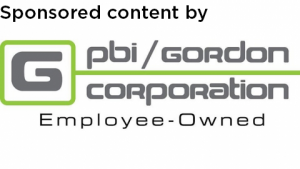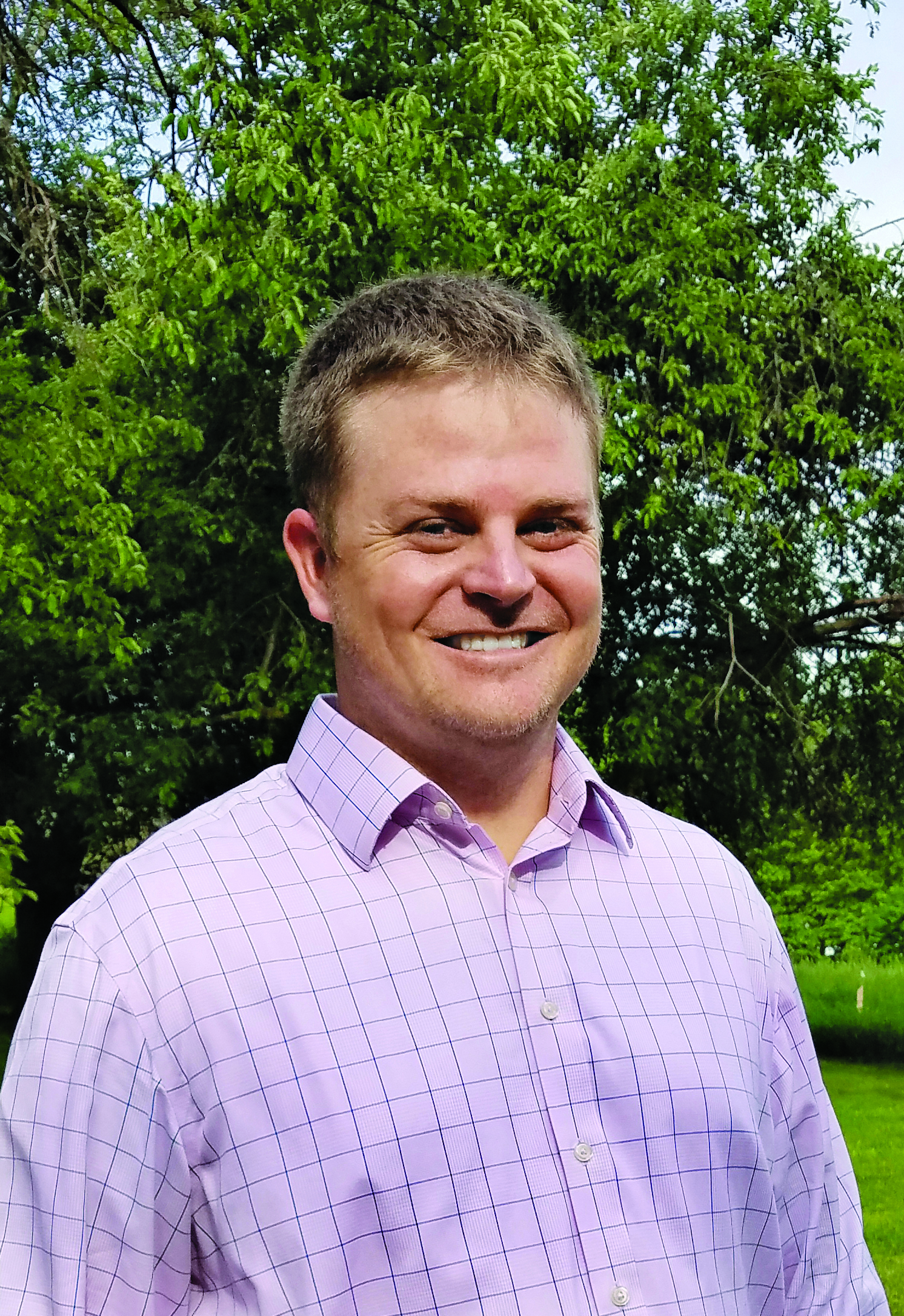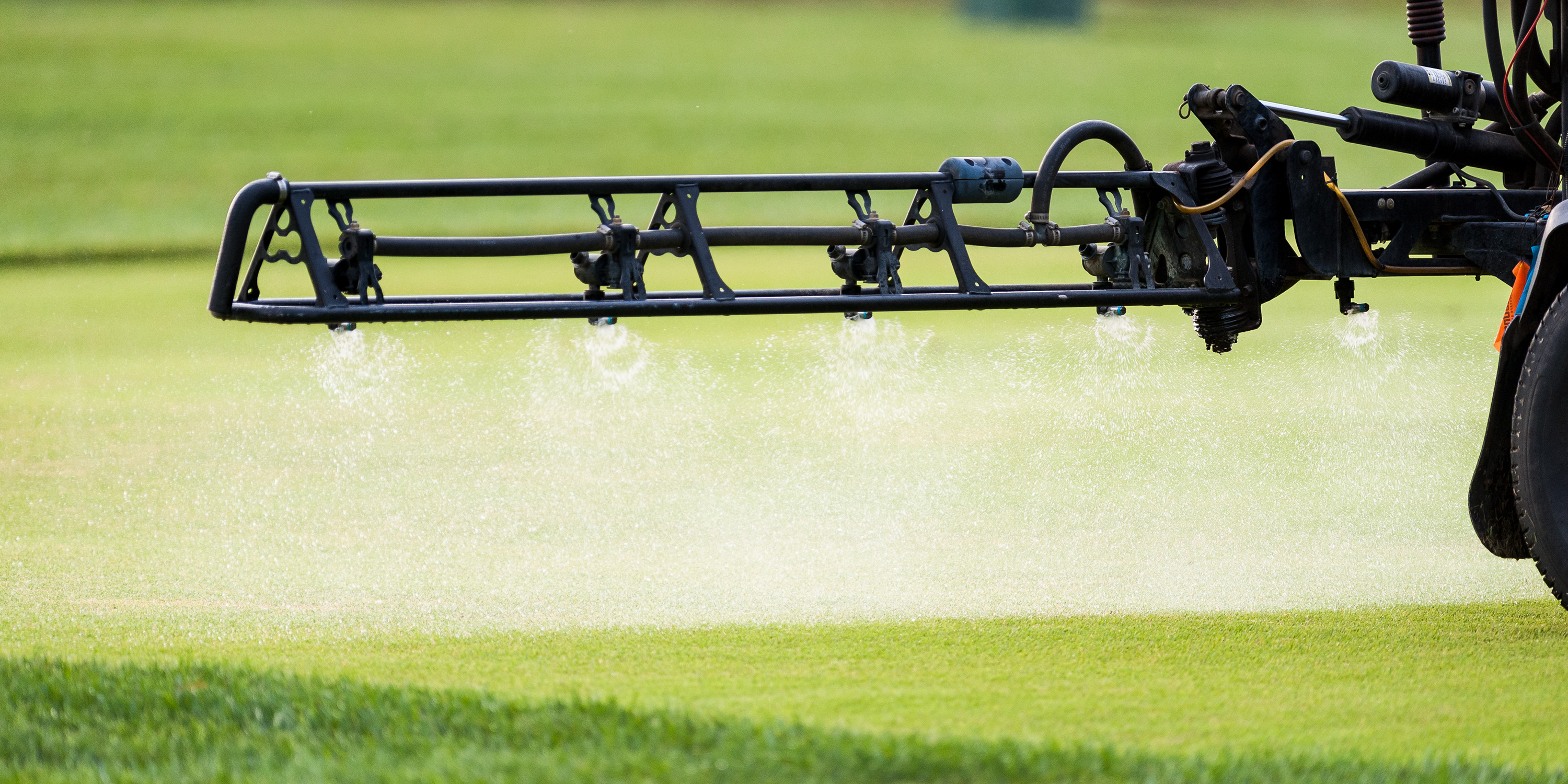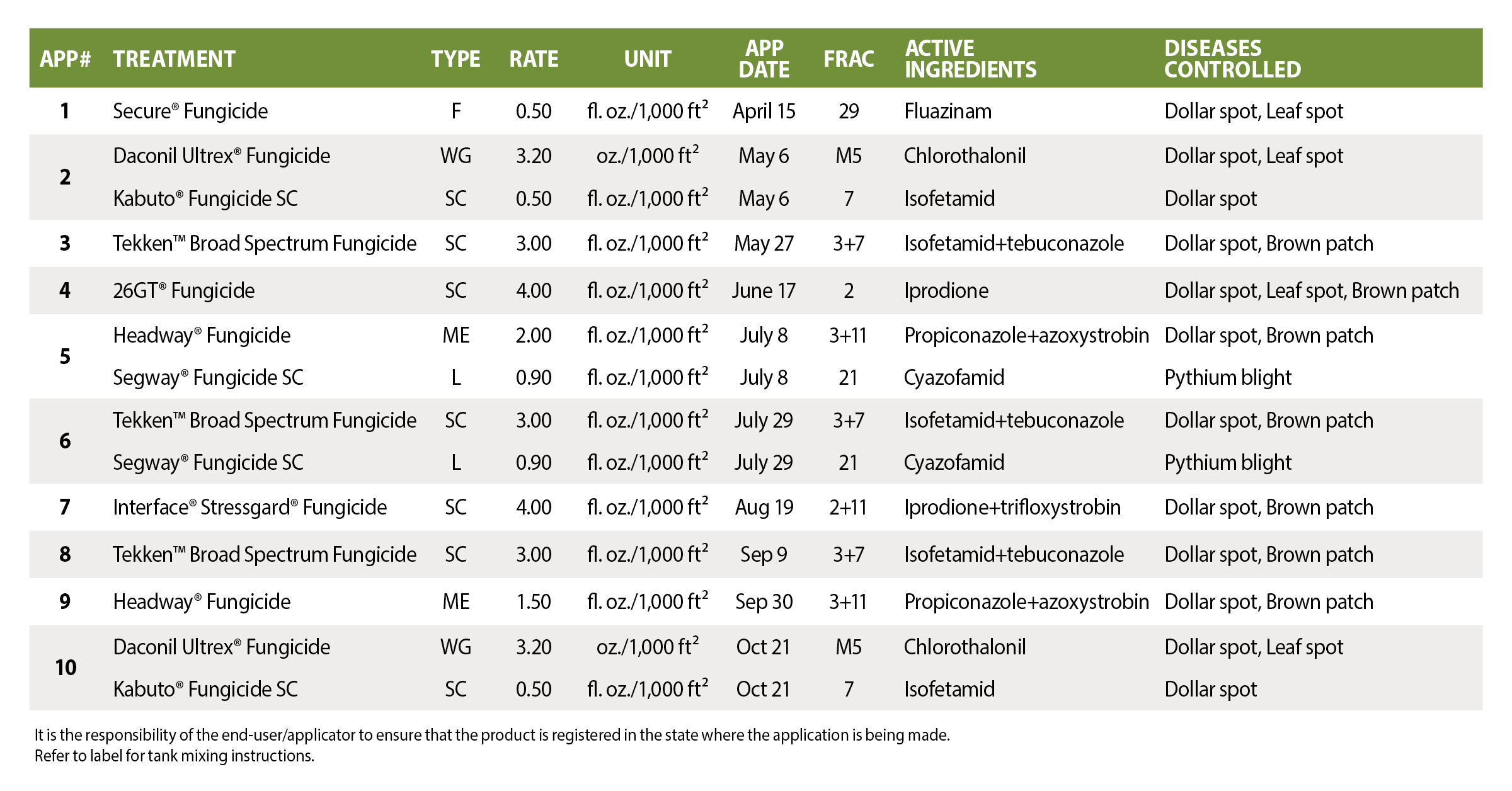 Proper fungicide rotation is just another way of saying fungicide resistance management. Resistance management is imperative for all superintendents, and it’s not just those in the academic community that will make that claim — it’s those in industry as well. Let’s face it, there’s not the pipeline of novel modes of action flowing into the market that there was at one time.
Proper fungicide rotation is just another way of saying fungicide resistance management. Resistance management is imperative for all superintendents, and it’s not just those in the academic community that will make that claim — it’s those in industry as well. Let’s face it, there’s not the pipeline of novel modes of action flowing into the market that there was at one time.
“As a plant pathologist, I am intrigued by the way pathogens incite diseases in plants, and the way we use fungicides to protect plants from said pathogens to keep golf courses looking like pristine masterpieces.”
-Brian Aynardi, Ph.D., Northeast research scientist for PBI-Gordon

Brian Aynardi, Ph.D. Northeast research scientist for PBI-Gordon
Examples of fungicide resistance
Resistance has developed among nearly all widely used broad-spectrum, site-specific fungicide groups. Examples are aplenty, including Sclerotinia homoeocapra (the pathogen causing dollar spot) resistance to the DMIs, dicarboximides, benzimidazoles, and now SDHIs; Colletotrichum cereale (pathogen causing anthracnose) resistance to the DMIs, QoIs, and benzimidazoles; Magnaporthe oryzae (the pathogen causing gray leaf spot) resistance to QoIs; and Pythium aphanidermatum (the pathogen causing Pythium blight) resistance to phenylamides and QoIs.
Creating a rotation program
So what is proper fungicide rotation and how can superintendents be a steward to the industry by engaging in this practice? Simple: Think of it as a chess game between the superintendent and the various fungi that cause turfgrass diseases. Those fungi develop resistance through the continual, repeated use of the same site-specific modes of action. A common analogy is the use of antibiotics or hand-sanitizer too often. The same principles apply with fungicides. The goal is to keep the fungus guessing by targeting it at different spots in its metabolic pathway each time the superintendent works to defend against it.
For example, when spraying to protect against the pathogen that causes dollar spot, Sclerotinia homoeocarpa (now Clarireedia sp.). If the first application is a DMI (FRAC Group 3), consider rotating on the next application to another FRAC group such as an SDHI (FRAC Group 7), and on the third application, rotate to a dicarboxamide (FRAC Group 2) or some other FRAC group. This is a good illustration of proper fungicide rotation.

However, while it is good in practice, it does not guarantee resistance will never develop. It is simply a way of delaying the onset of resistance. Superintendents can’t always rotate away to another group every single time. So, if using the previous example, use a DMI (FRAC Group 3) for a second consecutive application, that’s OK, but be sure to rotate to a different FRAC group following two consecutive applications.

Also, when making applications using premix products, be mindful to not break the two-consecutive application rule from any FRAC group.
These are from recommendations listed on fungicide labels and outlined by the Fungicide Resistance Action Committee (or FRAC) which has developed resistance guidelines and provides very useful information on fungicide resistance at their website frac.info.
PBI-Gordon has developed Rotation Nation™ fungicide rotation programs to meet the specific needs of different regions.
You can find Rotation Nation™ programs for the following regions:
- Bermudagrass
- Mid-Atlantic Fairways
- Mid-Atlantic Greens
- Midwest Fairways
- Midwest Greens
- Northeast Fairways
- Northeast Greens
This is a sample fungicide rotation program for Mid-Atlantic Fairways.
Avoid product overuse, despite results
One of the biggest issues golf course management faces is when a new class of chemistry gets introduced to the market and it provides great control of a pathogen. Why? Because superintendents tend to overuse the product and don’t properly rotate it into their currently existing program.
Take for example the active ingredient cyazofamid, representing FRAC group 21, which came to the market in 2007. It is a QiI fungicide, or quinone inside inhibitor. It works much like the quinone outside inhibitors, or strobilurins, except that it is highly effective against oomycete pathogens, or in the turf world, Pythium diseases. The product is marketed by PBI-Gordon as Segway® Fungicide SC.

Segway provides outstanding control of Pythium foliar blight, Pythium root rot and Pythium root dysfunction. It works so well, the question isn’t, “How do you like the results?” but rather, “Are you properly rotating it with other fungicides?” There haven’t been any reports concerning possible resistance of Segway.
Let’s face it, the days of “use it ’til ya lose it” are over. Superintendents need to be stewards of the industry, and not just for fungicides, but for insecticides and herbicides as well. The financial costs to bring new products to the marketplace are astronomical, and the pipeline for new chemistries is currently not there.
Let’s protect the valuable chemistries superintendents utilize to keep the courses looking pristine. It’s not that big of a challenge. Keep an eye out for the FRAC code(s) listed at the top of the label, and try not to apply an active ingredient from the same group on more than two consecutive applications.
The most important thing to remember: It’s all about rotation.
This page was produced by North Coast Media’s content marketing staff in collaboration with PBI-Gordon. NCM Content Marketing connects marketers to audiences and delivers industry trends, business tips and product information. The Golfdom editorial staff did not create this content.
Photos: PBI Gordon






